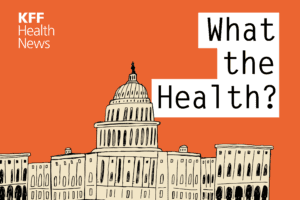Pros and Cons of High-Deductible Health Plans (HDHPs)

High Deductible Health Plans (HDHPs) offer a unique blend of advantages and disadvantages, especially for small to medium-sized businesses (SMBs) seeking affordable health insurance options. While these plans feature lower monthly premiums, they also come with higher out-of-pocket costs, leaving employers and employees weighing the potential benefits and downsides.
In this article, we’ll break down the high deductible health plan pros and cons to help you determine if this type of health plan is the right fit for your company’s needs.
Table of Contents
What is a High Deductible Health Plan (HDHP)?
Benefits of a High Deductible Health Plan
Low Monthly Premiums
Lower Costs for In-Network Providers
HSAs and HRAs
Lower Costs for Employers
Meeting Your Maximum in the Year
Disadvantages of a High Deductible Health Plan
High Deductible
Reluctance for Employees to Seek Medical Care
Chronic Illnesses and Coverage Challenges
Out-of-Pocket Costs Rise Every Year
HSA Contribution Limits
Conclusion
What is a High Deductible Health Plan and How Does it Work?
High Deductible Health Plans (HDHPs) have grown in popularity, offering a cost-saving alternative to traditional health insurance options. With lower monthly premiums and tax-advantaged accounts like HSAs, HDHPs seem like a great fit for many businesses. However, they also bring higher out-of-pocket expenses and potential barriers to healthcare access.
Here, we’ll review the high deductible health plan pros and cons, discuss their main advantages and disadvantages, and provide insights for business owners deciding if an HDHP aligns with their goals.
Key Takeaways
HDHPs lower monthly premiums but raise out-of-pocket costs for employees.
Tax-advantaged savings accounts (HSAs and HRAs) can ease the burden of high deductibles.
Employers must consider both the financial benefits and potential downsides for their employees.
More about High Deductible Health Plans (HDHP)
A High Deductible Health Plan (HDHP) is a type of health insurance that requires the policyholder to pay a higher deductible before the insurance company starts covering medical expenses. In exchange for these higher deductibles, HDHPs typically offer lower monthly premiums compared to traditional health plans, making them an attractive option for businesses and individuals looking to lower upfront healthcare costs.
How HDHPs work: With an HDHP, the deductible—the amount an employee must pay out-of-pocket for medical care before insurance kicks in—can be significantly higher than with other plans. However, after meeting this deductible, the plan often covers a substantial portion of any further healthcare expenses for the remainder of the year.
Examples of HDHPs: These plans are available through major health insurance providers, such as Cigna and UnitedHealthcare, with deductibles that often range from $1,500 to $3,000 for individual coverage and from $3,000 to $6,000 for family coverage.
Benefits of a High Deductible Health Plan
High Deductible Health Plans (HDHPs) come with several advantages, especially when compared to traditional health care plans. These benefits can appeal to both employers and employees, offering cost-saving opportunities while providing flexibility in healthcare spending. But you may wonder, is high deductible health insurance better than traditional options? For many, the answer depends on their health needs and financial situation. Let’s explore the specific advantages of HDHPs to help you decide.
Low Monthly Premiums
One of the biggest draws of an HDHP is its low monthly premiums. Compared to traditional health insurance plans, HDHPs offer significantly reduced costs on monthly payments. This makes them an attractive option for employers looking to lower their healthcare expenses and for employees who prefer paying less upfront for their health coverage. The downside to having a high deductible is that out-of-pocket costs may increase, but for many, the savings on premiums offset this.
Lower Costs for In-Network Providers
HDHPs often offer lower costs for services provided by in-network doctors and specialists. For example, employees may see significant discounts when visiting general practitioners or specialists who are part of the plan’s network. In some cases, these discounts can reduce costs by as much as 20% to 30%, making necessary healthcare services more affordable once the deductible is met. This benefit adds to the appeal of High Deductible health insurance for those who regularly use in-network providers.
HSAs and HRAs
One of the greatest advantages of HDHPs is the ability to pair them with Health Savings Accounts (HSAs) or Health Reimbursement Arrangements (HRAs). HSAs allow employees to contribute pre-tax dollars to an account that can be used for qualifying medical expenses. These funds can roll over year to year, creating a long-term savings option for healthcare costs. HRAs, on the other hand, are funded by employers and can help employees cover out-of-pocket expenses. These tax-advantaged accounts make HDHPs an appealing choice, as they give employees more control over their healthcare spending and provide financial relief for High Deductible costs. More on HRAs and HSAs here.
Types of HRAs: QSEHRA and ICHRA
Health Reimbursement Arrangements (HRAs) offer flexible, tax-advantaged ways for employers to help cover their employees’ medical expenses. Two popular types of HRAs are the Qualified Small Employer HRA (QSEHRA) and the Individual Coverage HRA (ICHRA).
QSEHRA: This type of HRA is designed for small businesses with fewer than 50 employees. It allows employers to reimburse employees for medical expenses and individual health insurance premiums on a tax-free basis, without needing to offer group health insurance.
ICHRA: The ICHRA offers more flexibility, allowing employers of any size to provide tax-free reimbursements for individual health insurance plans. This option also gives businesses the ability to customize reimbursement rates based on factors like age or family size.
Both QSEHRA and ICHRA enable employers to offer personalized health benefits while managing costs.
Lower Cost for Employers
For employers, the lower premiums associated with HDHPs can result in significant savings. Offering an HDHP allows businesses, particularly small and medium-sized enterprises (SMBs), to control healthcare spending while still providing coverage that meets the needs of their workforce. Additionally, employers contributing to employee HSAs or HRAs can provide meaningful benefits without the high costs associated with more traditional health plans.
Meeting Your Maximum in the Year
Once an employee meets their annual deductible under an HDHP, they benefit from substantial cost reductions for further medical services for the remainder of the year. At this point, most HDHPs cover 100% of in-network healthcare costs, which can include everything from specialist visits to major procedures. This makes HDHPs a compelling option for individuals or families who expect higher healthcare expenses later in the year, as they can reach the out-of-pocket maximum and enjoy full coverage for subsequent care.
Disadvantages of a High Deductible Health Plan
While High Deductible Health Plans (HDHPs) offer financial advantages, they also come with several drawbacks that both employers and employees should consider. Some of these challenges can impact employee health choices, particularly when paired with Health Savings Accounts (HSAs) or Health Reimbursement Arrangements (HRAs).
High Deductible
The most obvious downside to having a high deductible is the financial burden it places on employees before insurance starts covering medical expenses. Employees must cover all healthcare costs up to the deductible, which can often range from $1,500 to $3,000 for individuals or even higher for families. This out-of-pocket expense can be a barrier for those with lower incomes or for employees who do not frequently require healthcare services. The high upfront cost may cause some to delay or avoid necessary care, impacting long-term health outcomes.
Reluctance for Employees to Seek Medical Care
HDHPs can make employees hesitant to seek medical care due to cost concerns, particularly early in the year when they haven’t yet met their deductible. Employees may forgo preventive care or delay doctor visits, which could lead to more serious and expensive health issues down the road.
There are also challenges specific to HSAs and HRAs. For instance, new HSA accounts may not have enough funds to cover larger medical expenses right away. On the other hand, with HRAs, employees may find themselves paying too much out-of-pocket before receiving reimbursements, especially if their plan doesn’t fully cover high upfront costs. This can create anxiety around seeking care, especially for lower-income employees.
Chronic Illnesses May Be Better Covered with Traditional Plans
For employees with chronic illnesses or ongoing medical needs, traditional health plans might provide better coverage. High monthly out-of-pocket costs associated with chronic conditions may prevent these employees from accruing enough funds in an HSA to cover their healthcare expenses effectively. For example, someone with diabetes or another long-term condition might find that the continuous need for care makes it difficult to ever reach the deductible, leaving them with significant ongoing expenses.
In contrast, a traditional health plan may have higher premiums but lower, more predictable out-of-pocket costs, which could be a more manageable option for employees with chronic illnesses.
There Are Exception Costs After Meeting Your Deductible
Even after an employee meets their deductible under an HDHP, some healthcare services may not be fully covered. Certain exceptions, such as out-of-network care or specialized treatments, might still come with additional costs, leaving employees responsible for paying more than they expected. This can be a surprise for employees who assume that all their medical expenses will be covered once the deductible is met.
Out-of-Pocket Costs Rise Every Year
Another drawback is that out-of-pocket costs tend to increase annually for HDHPs. Deductibles and maximum out-of-pocket limits can rise each year, making it more challenging for employees to budget for their healthcare expenses. Over time, this can erode the initial cost savings that come from lower premiums, and employees may find themselves shouldering higher overall healthcare costs year after year.
HSA Contributions Are Capped
While HSAs provide tax advantages and help employees save for healthcare expenses, they come with contribution limits. In 2024, the maximum contribution is $4,150 for individuals and $8,300 for families. These limits may not be sufficient for employees with higher medical expenses, especially those with chronic conditions or large families.
However, HRAs may offer some flexibility here, as they are funded by employers and don’t have the same contribution caps. This could make HRAs a better option for employees who anticipate higher healthcare costs but would struggle to save enough in an HSA due to contribution limits.
FAQs
What is a High Deductible Health Plan (HDHP)?
A high-deductible health plan (HDHP) is a type of health insurance that requires individuals to pay higher out-of-pocket costs before the insurance begins covering expenses. These plans typically come with lower monthly premiums and are often paired with Health Savings Accounts (HSAs) to help manage medical expenses. HDHPs are becoming increasingly popular for both individuals and businesses due to their cost-saving potential.
Is High Deductible Health Insurance Better Than Traditional Health Insurance?
Whether high-deductible health insurance is better depends on your specific healthcare needs and financial situation. For individuals who don’t need frequent medical care and prefer lower monthly premiums, an HDHP might be a better option. However, those with chronic conditions or high medical expenses may find traditional plans with lower deductibles to be more cost-effective in the long run.
What Are the Disadvantages of a High Deductible Health Plan?
The primary disadvantages of a high-deductible health plan include the high out-of-pocket costs and the potential reluctance to seek medical care due to upfront expenses. While HDHPs have lower premiums, individuals may face financial strain if they need medical services before meeting the deductible. This is particularly challenging for those who require frequent healthcare services or have chronic conditions.
Why Choose a High Deductible Health Plan?
Why choose a high-deductible health plan? The main reason is the potential for significant cost savings through lower monthly premiums. Additionally, these plans offer tax benefits when paired with Health Savings Accounts (HSAs). However, it’s important to weigh the benefits of a high-deductible health plan against the potential downside to having a high deductible, especially if your employees or you may have high medical expenses throughout the year.
High Deductible Health Plan Pros and Cons: How to Make the Right Choice for Your Business
Choosing the right health plan for your business means weighing the pros and cons. But why choose a high deductible health plan over other types of insurance? HDHPs can offer significant savings on premiums and provide tax advantages, but the higher out-of-pocket costs may not be ideal for every workforce. If you have a generally healthy workforce and want to lower monthly healthcare costs, an HDHP might be a better fit.
However, if you’re concerned about the potential downsides, such as employees delaying care due to high deductibles, an alternative like an HRA could be more suitable.
Take Command can help your business explore HRA options that provide the best coverage for both your budget and your employees’ needs. Contact us today to learn more about switching to an HRA and maximizing your health benefits strategy!



